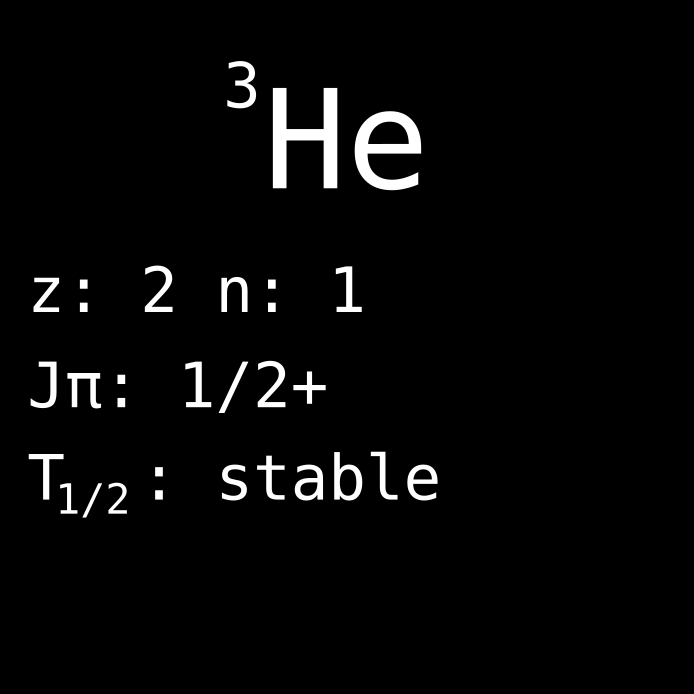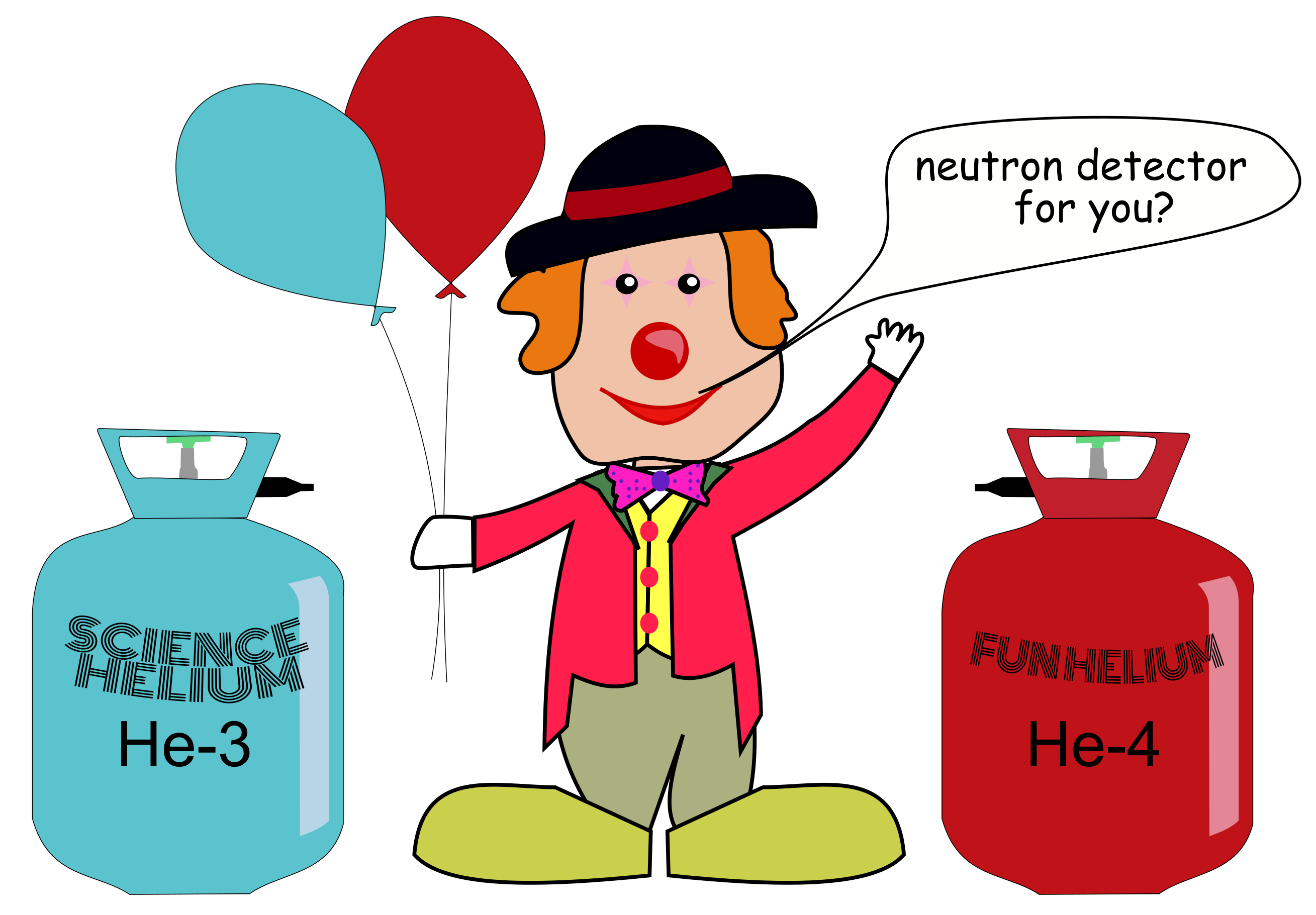

We all know helium: a gas that makes balloons at parties much more fun, especially when we use them to change our voice. Helium has two stable isotopes, and the lighter one, with 2 protons and 1 neutron is a reminder that sometimes even scientists need to face the harsh reality of supply and demand. Although He-3 is stable and occurs naturally, it's rare, around 0.000137% of helium on Earth is He-3. And that's a pity, because it has very (sometimes literally) cool applications: With helium-3 refrigerators we can reach around 0.2-0.3 K (at 0 K, or absolute zero particles do not move anymore), and it happens to be a great choice also for medical imaging. But we are nuclear scientists, so we appreciate He-3 for other reasons.
He-3 nuclei have a very large probability of absorbing low-energy neutrons, thus it is a great choice for neutron detectors for example if one wants to catch plutonium smuggling. Therefore, He-3 has a huge role in national security. And actually this brought its downfall, after September 11 the demand for He-3 increased a lot, and the supplies couldn't catch up. Still today there is a large effort of developing alternative neutron detectors with the same efficiency.
Why is there so little He-3 on Earth? It is not a radioactive nuclide that disappears, after all. The reason is that both He3 and He-4 atoms are so light, and as noble gasses, neither do they make up molecules with other heavier chemical elements. Such light gases have very high velocity as free particles in our atmosphere, in fact pretty close to the escape velocity of our planet. Therefore, over millions of years, we lose our atmospheric helium to space. The helium that we do have around is mostly He-4, produced continuously in subterranean alpha decays. This is trapped in wells with fossil gas, and is also extracted together with that. However, due to its origin as alpha decays, this mostly consists of He-4.
Of course one might ask why couldn't we just produce more? And there is the difficulty: He-3 can be produced from the decay of tritium (H-3, or T for short), however, because of a reduction of the world’s nuclear weapon stockpiles, there was a reduced need for tritium. With less tritium being handled, less He-3 is produced by its decay. Thus, while the He-3 demand increased, the supply actually decreased.
He-3 has one other appeal to nuclear physicists: it can serve as fuel in fusion reactors. An advantage with helium-3 fusion reactions is that they do not produce neutrons, only charged ions. In traditional fusion devices (if we can call it traditional), heat is produced from D-D and D-T reactions, both of which produce neutrons. Since neutrons are neutral, they cannot be contained with electric fields, so they have a tendency to damage, and also activate the walls of the fusion device, which has some implications in radiation protection and waste management, although typically the activation would decay away relatively fast. However, the He-3 fusion would produce only charged protons and He-4. Since both the products are electrically charged, they’d also be contained by magnetic fields, so that they aid in heating the surrounding fuel to temperatures needed to make the fuel ignite.
Well, if using He-3 as a primary energy source, there is of course a problem if it is very scarce. Some propose increasing He-3 supply by mining it outside of Earth... for example on the Moon. Lunar Helium is largely deposited helium from the solar wind, and is therefore not as dominated by He-4 such as the helium on Earth. In addition, the gas giants have much more He-3 abundancy, and could potentially be used as a future supply. Finally, gas from Uranus may be a valued commodity, no pun intended.

© 2020 Zs. Elter, P. Andersson and A. Al-Adili